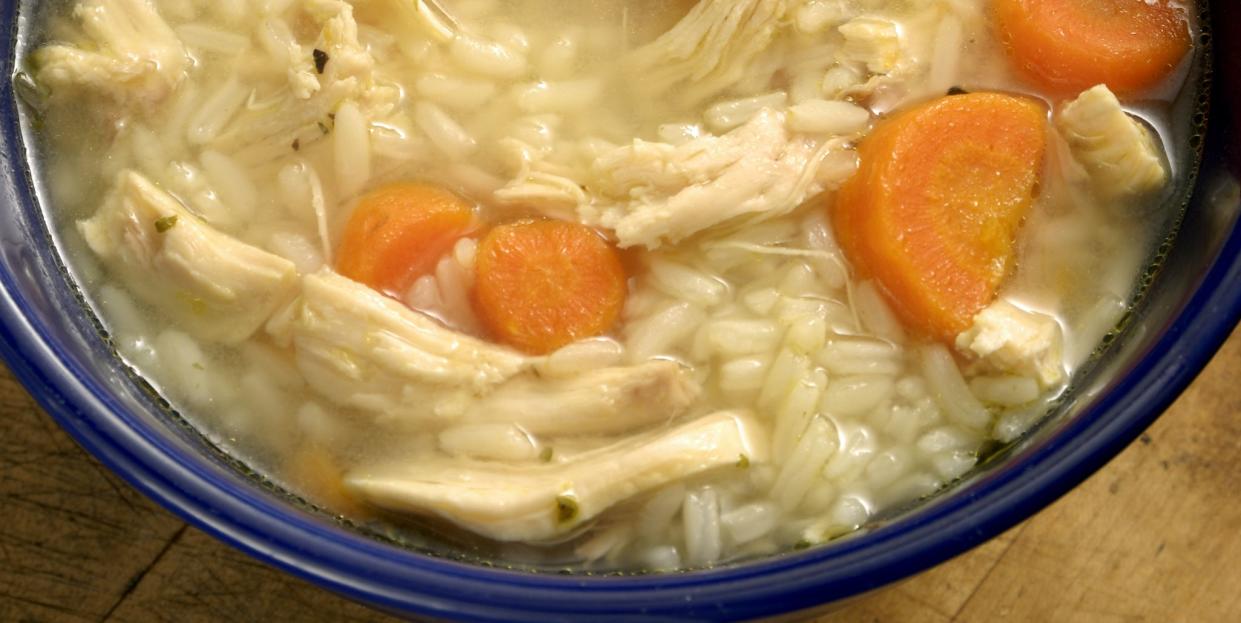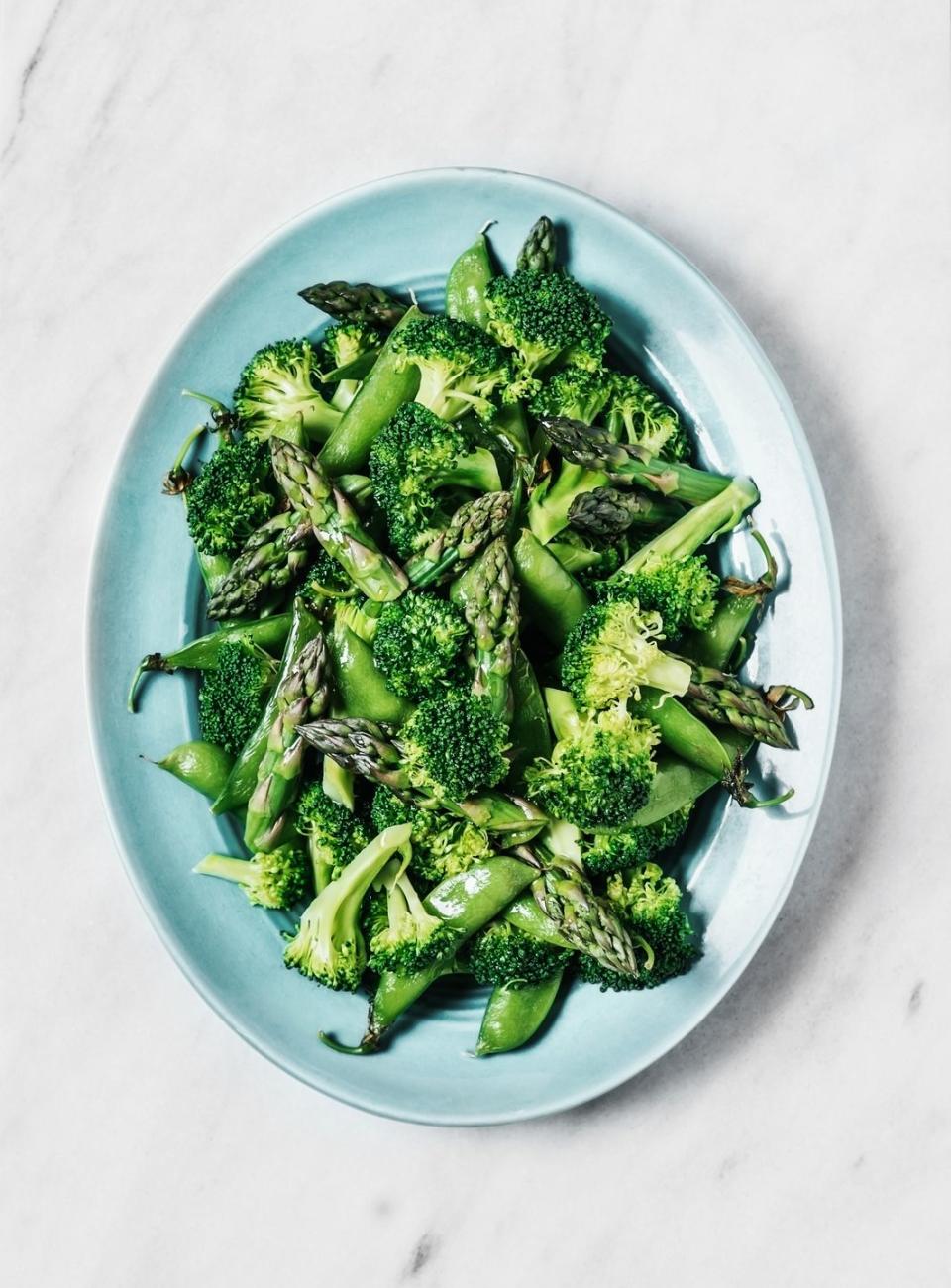Should You Really Feed a Cold, Starve a Fever?

We’ve probably all heard the classic “feed a cold, starve a fever” advice. But if it’s the advice you’re living by, it might be time to reconsider your tactics the next time you feel a bug coming your way. Turns out that ancient phrase is only half right.
The thinking started in the 1500s, explains Sharon Bergquist, M.D., assistant professor of medicine at Emory University. “There was a belief that a person had a cold because their body temperature was low, and feeding could increase their temperature and help fight the illness,” she says. “A fever meant the body temperature was high, and starving a person would slow down metabolism, bring down body temperature, and could stop stoking the fires.”
Feeding a cold is good practice, but so is feeding a fever, says Dr. Bergquist. “Your body needs nutrients to help the immune system mount a strong response.” So, getting food in your system is essential for both. And listening to your body is even more important. Keeping up your calorie intake is a good idea. If your cold or fever has altered your appetite, however, don’t force it.
While it may be different from the old-school “feed a cold, starve a fever” advice, here, doctors share some great ways to get you back on your feet.
What should you feed your cold or fever?
As you can imagine, no doctor is going to say doughnuts and bacon. Here’s what to swallow, according to Dr. Bergquist:
Liquids are more important than solids. “When you’re sick, your appetite decreases because your body diverts so much of its energy to fighting infection and it has less energy for digestion,” she says. Liquids are easier to take in, especially when your nose is stuffy. Plus, you need extra hydration when you have a fever, since a higher body temperature means more sweat. And more sweat means you lose electrolytes—sodium, chloride, potassium, and magnesium. You can replace those through liquids like broth or sports drinks. Water and juices can also serve as go-to liquids to get in your system. With a fever, it’s good to avoid caffeinated or alcoholic drinks, as they can make symptoms worse. Carbonated soft drinks have none of the nutrients and electrolytes that can fight off sickness, and alcohol is a one-way ticket to more dehydration.
Warm liquids are better than cold ones. “Vapor from hot liquids can moisten your sinus passages and your throat,” she says. “That helps break down the mucus so you can expectorate it—expectorating mucus is our first line of defense in getting rid of germs.”Is chicken soup the king of all warm liquids? “It has a lot of advantages,” she says. It’s hot, has electrolytes, and if it has vegetables, it contains antioxidants that help support your immune system. Hot herbal tea can be just as beneficial, too. Besides being a comforting drink, the heat can soothe sore throats and chest congestion. Herbs like ginger can also keep your immune system running well.
Feed your body to prevent a cold or fever next time
There’s no magic food that prevents colds, but “if a person has certain habits, the immune system in general is stronger,” says Dr. Bergquist. That means you would get sick less frequently and you’d get over the cold or fever sooner.
“Seventy percent of the immune system is in the gut,” she points out. “So gut bacterial balance is a key part of your immunity.” While it’s not clear exactly which bacterial strains will give you the best balance of good and bad bacteria in your gut, diversity seems to be important. So you want to feed your gut not just the probiotics everyone talks about; you want prebiotics that feed those probiotics. “All prebiotics are fiber, but not all fiber is a prebiotic,” she says. Aim for a diversity of fibers from foods including fruits, vegetables, legumes, nuts, and seeds.”
Some tips: Fruits and vegetables are great, but try focusing on those that are brightly colored. Butternut squash, red bell peppers and sweet potatoes are high in beta-carotene, which our bodies convert to vitamin A. Another option could be adding garlic and onions to your meals, as both have an antimicrobial action that protects against infections.

Familiar advice, yes. But are you doing it? You don't have to live on walnut-studded kale salad (although that’s not a bad choice). Check out this Mediterranean Roasted Red Pepper Chicken with Lemony Garlic Hummus, or discover how to eat a day’s worth of healthy greens in 14 minutes (it’s actually amazing, trust us).
You Might Also Like

